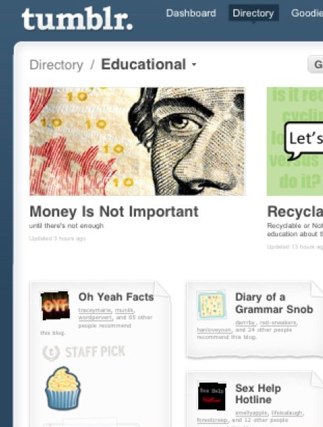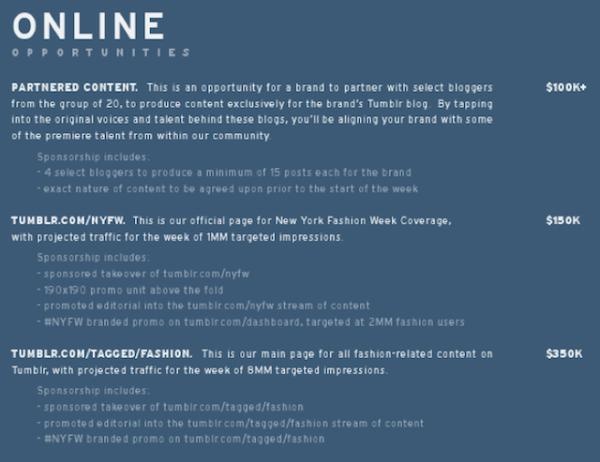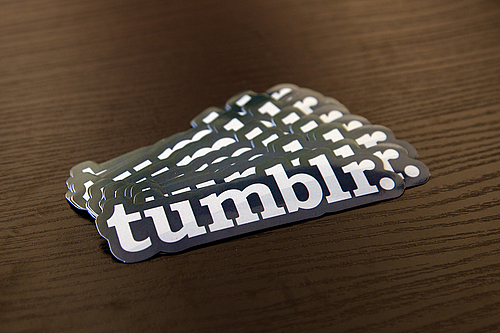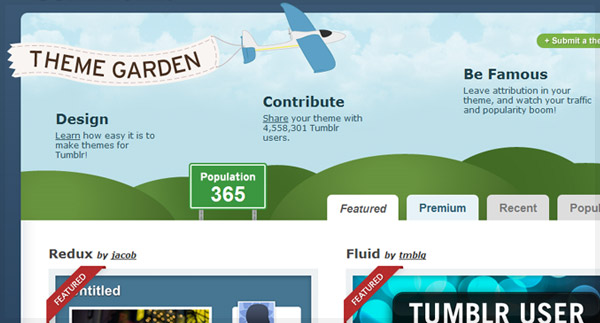Tumblr has been growing exponentially for quite awhile now, but one question has always remained for venture capitalists:
“How are they going to turn a profit from this?”
David Karp, Tumblr’s founder, has long attempted to answer this question in a way that most benefits the users. He is well aware of the fact that they could simply start putting ads on everyone’s dashboard, and that it would make the company millions of dollars in revenue. But, Karp is against it because he always wants to put the user experience first, and ads don’t fit in with that philosophy.
Awhile back, Tumblr had the Directory. It can still be accessed today by directing typing in the URL for it, but you won’t find links for it on the site anywhere. Tumblr blogs were listed in the directory, and you could pay a premium to have your page rotated in the large, highlighted area at the top. Depending on the popularity of the category, the cost varied. Under this old structure, you could also purchase virtual stickers to give as a gift that would show on someone’s directory listing.
While that strategy certainly brought in revenue for the company, it wasn’t a strategy that would sustain the company’s growth.
Tumblr has also tried to use sponsorship of their curated tags to monetize the site. During Fashion Week in 2010, this was a huge initiative. Below, you’ll see the pricing release that was released:
There was a bit of controversy with this strategy, however, because the CPM (cost per thousand clicks) was close to $70.
This past week, Tumblr rolled out its latest strategy. It will give users the option to highlight their post on their followers’ dashboards for $1.
When a post is highlighted, a little sticker appears next to the top of the post, the text is slightly enlarged, and the edges glow slightly.
Only time will tell if this strategy will work in the long term, but I think it has promise. It’s something that could have a big impact (compared to the cost) for users that want to highlight a product launch, a new idea, or if they just want to have fun with it.
In an effort to get the new feature to catch on with other users, Tumblr reached out to some of its top blogs and gave them a $3 credit to try it out. If it works, you could see other platforms like Twitter or Pinterest adopting this strategy in the near future.





